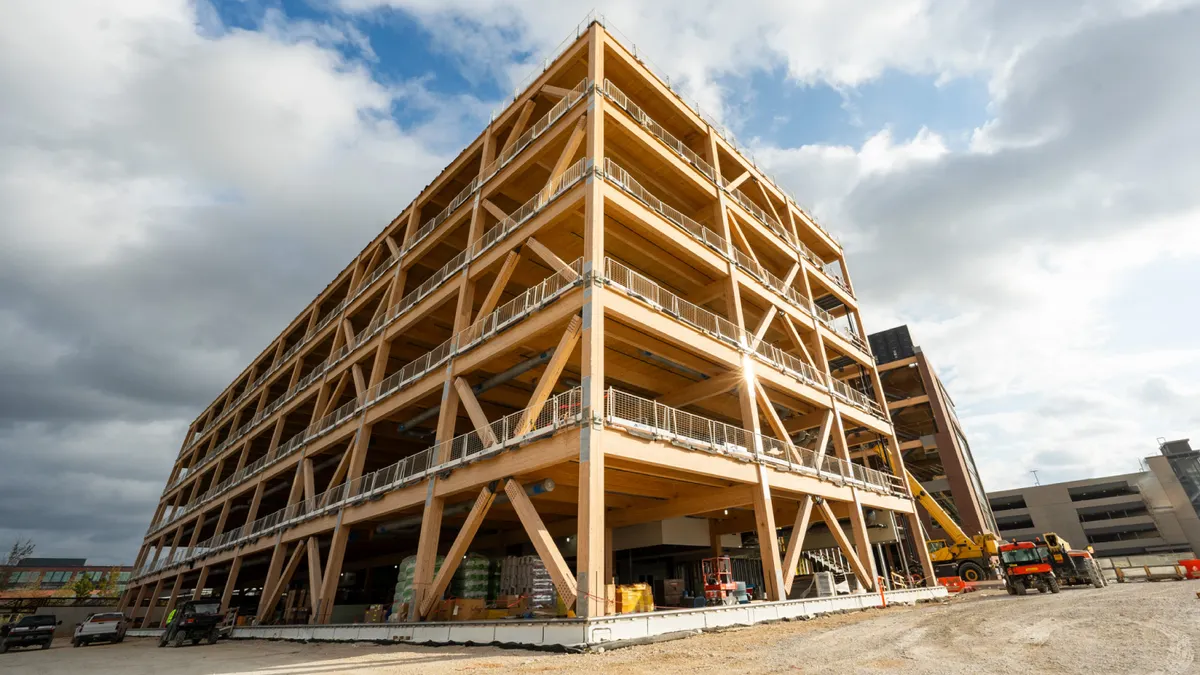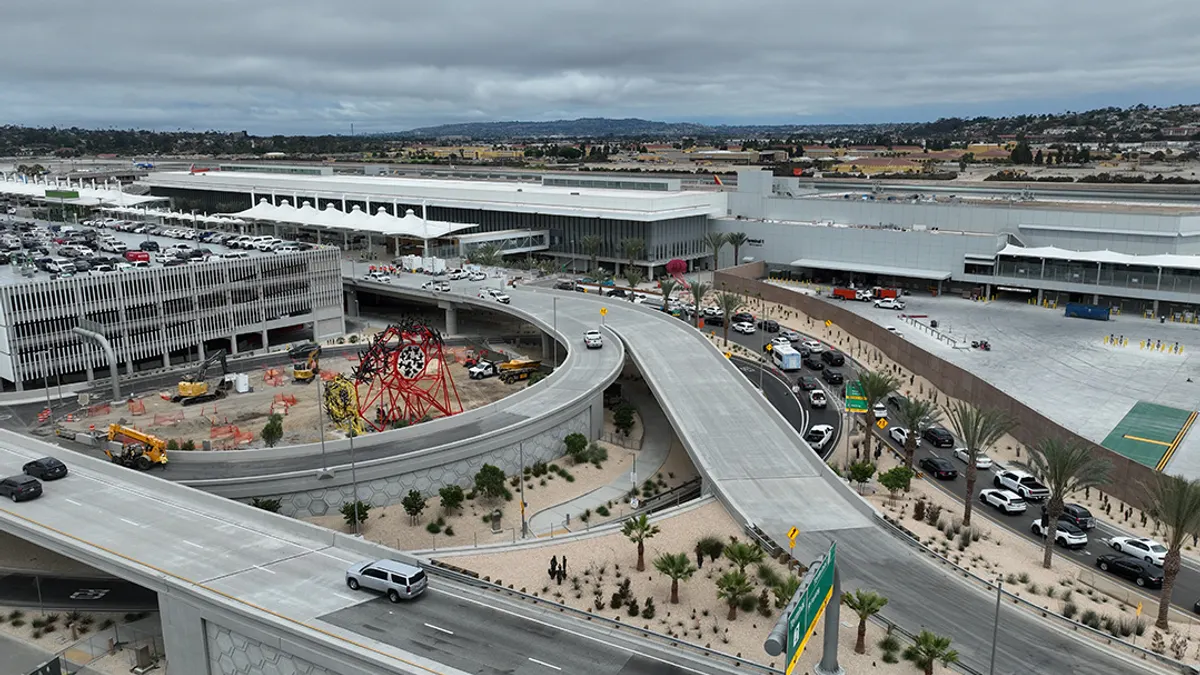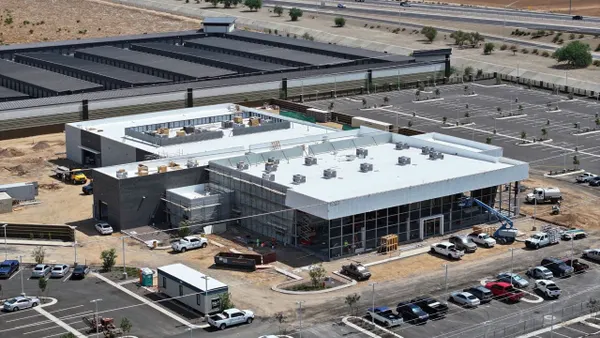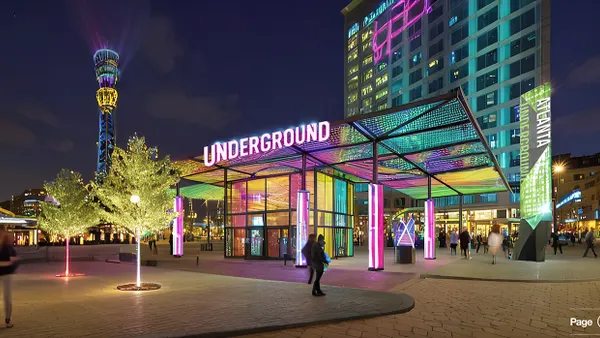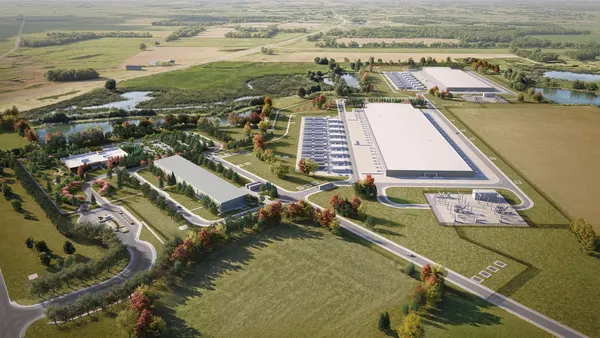Dive Brief:
- Construction of the $35.5 million University Arts Building at the University of Nevada, Reno is being done in part by SAM100, a bricklaying robot engineered by Construction Robotics, according to NevadaToday. The robot is reportedly laying about 60,000 units of bricks out of the 100,000 bricks that are being installed in the three-story building, slated for a fall completion. A-1 Masonry and Sandblasting, the only SAM-certified contractor in Nevada with exclusive rights for use, and general contractor Q&D Construction of Sparks, Nevada, are working on the project.
- SAM100, which stands for semi-automated mason, uses a metal robotic arm to spread mortar on bricks before a laser-guided system lays the bricks in rows. It is designed to work on large, uninterrupted walls, so humans must brick and mortar the first 5 feet of any area, as well as corners and around windows and doors.
- A mason lays on average about 250 bricks per day, while SAM100 can install 200 to 250 bricks per hour. That translates to mason work being completed in two to three months instead of the four to five months it would take manually.
Dive Insight:
Technology not only helps expedite various jobsite tasks and make projects safer, but it’s also getting more attention for its potential to help ease the labor shortage.
In Japan, robots are helping to do just that. Shimizu Corp. in May announced it was in the final stages of developing autonomous robots that can carry materials, work on floors and ceilings and weld steel columns, which it hopes to use on a high-rise project in Osaka, Japan. Shimizu estimates the robots will initially take over just 1% of the work and notes that Japanese regulations require the robots to work only night shifts with no humans present, but it’s a step in the right direction.
A new survey from the Associated General Contractors of America and Autodesk estimated that 80% of contractors struggle to fill hourly craft worker positions — a number that is poised to grow, according to the study. Sarah Hodges, senior director of the construction business line at Autodesk, said technology is a potential avenue to decrease that number, as it enables connectivity between the jobsite and the back office and is changing how information is collected and analyzed.
Dan Gilbane, senior vice president of Gilbane Building Co.’s southwest division, said in a survey announcement that he uses drones, 3D printing and virtual environments to attract and retain talent, as well as improve productivity.



